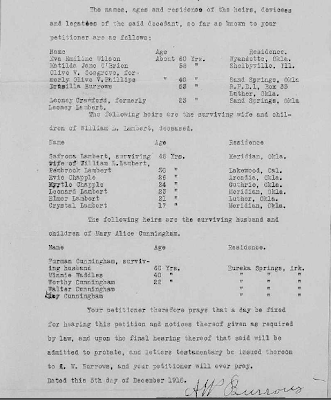In the brief time I had to research, I focused on Tennessee, and found a key piece of information to verify First Families of Tennessee status via my 6th-great-grandfather, Thomas Jones. I'll have more on this in a separate post, but Thomas appears in the 1 August 1796 Jefferson County Court files, when he was appointed to oversee a road to Dandridge, Tennessee.
Unfortunately on Friday morning I had to make an unexpected trip back to DC, causing me to miss the FHISO panel. Below are the remarks that I would have made on the panel:
Remarks For Rootstech on FHISO - 23 March 2013
Yesterday I had to leave Rootstech early and unfortunately missed the FHISO panel during the Developer Day track. These are the remarks I would have made.
My name is Patrick Jones, I am Senior Director of Security at the Internet Corporation for Assigned Names and Numbers (ICANN, https://www.icann.org/). ICANN is a global organization that coordinates the Internet's unique identifier system (domain names, such as .com, .info and .us; Internet protocol addresses and numbers; and protocol port and parameter numbers). We do this for worldwide public benefit, enabling a single interoperable Internet. ICANN works through a multistakeholder model, facilitating participation by all interested parties, to foster a healthy, stable and resilient Internet ecosystem through coordination and collaboration.
I make these remarks in my personal capacity, from the perspective of someone who has worked in a multistakeholder environment for the past 13 years and from the perspective of an individual family historian.
Last summer I read the FHISO introductory paper, describing the need for a community-driven effort to develop information standards in the family history space. The premise sounded a lot like the multistakeholder environment in Internet coordination, so I reached out to the organizers, asked some questions and made some suggestions for strengthening the concept. They took those suggestions on board and have continued to grow support for collaborative standards development in the family history environment. It has been great to see some of the largest commercial entities in the space come together with a growing number of genealogical societies.
Between the members of this panel (Ancestry, Brightsolid, FGS and RootsMagic), they host billions of images and records, important historical data that is valuable on its own. But once users add context and connections to that data, it becomes even more valuable - not just to these entities, but for users, who want to be confident the information is secure and stable, and for the greater community who may look for this knowledge in the future. Having an open, collaborative environment for family history information standards strengthens that data, and makes it easier for users to transfer it among operators. This effort may help increase accuracy, stability and interoperability for the larger family history community.
There are two developments in the international arena that make it a good time for FHISO to launch its efforts to a broad audience.
First, in August 2012, the Open Stand initiative (http://open-stand.org/) was announced. This is a joint effort by the Internet Society, Internet Architecture Board, IEEE, Internet Engineering Task Force and the World Wide Web Consortium (W3C), supported by hundreds of individuals worldwide. Open Stand promotes a set of principles for modern standards development:
1. Cooperation
2. Adherence to principles (due process, broad consensus, transparency, balance, openness)
3. Collective empowerment
4. Availability (standards specifications that are accessible to all)
5. Voluntary Adoption
The Open Stand principles align with the mission of FHISO to bring together stakeholders from the genealogy and family history communities to develop open, international technology standards, and provide an example for the family history community to follow.
The second major development occurred in January 2013. The United Nations Educational, Scientific and Cultural Organization (UNESCO) published its Vancouver Declaration (see PDF at http://www.unesco.org/new/
FHISO is kicking off at the right time to build from Open Stand, UNESCO's Vancouver Declaration and other efforts in the greater Internet community as a collaboration point for information standards in the family history space. I look forward to where it is headed next, and I encourage the Rootstech community to look closely at FHISO as an opportunity to work together.
Thank you.
--
I wish I had been able to stay on for Friday's sessions as planned and had another 3-4 hours of time at the Family History Library. It looks like next year's Rootstech will be 6-8 February 2014. This falls in a good spot on the calendar, between big meetings in Buenos Aires and Singapore. Perhaps I'll be able to go back in February.
From my brief time there, it was an enjoyable event. There were some interesting vendors in the Expo Hall (the fan charts from genealogywallcharts.com were pretty cool). Last year I was able to watch the main sessions via the webcast, and I'll have to go back can watch the recordings for 2013 when I have some time.






























